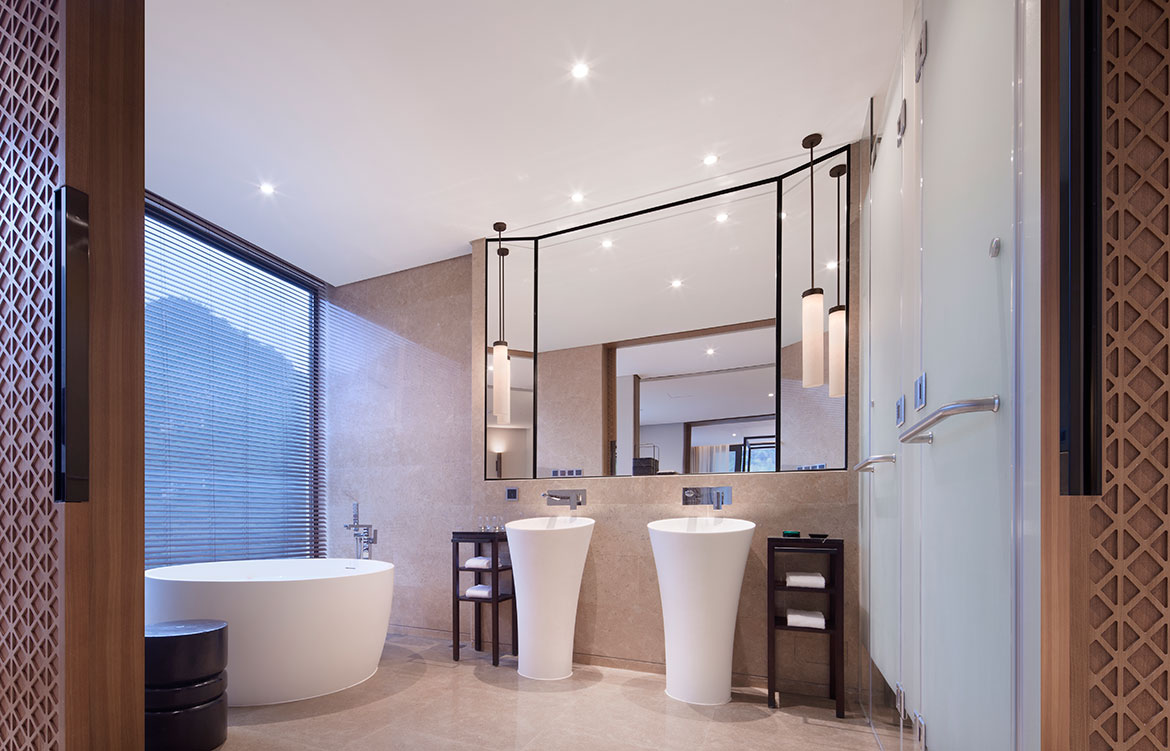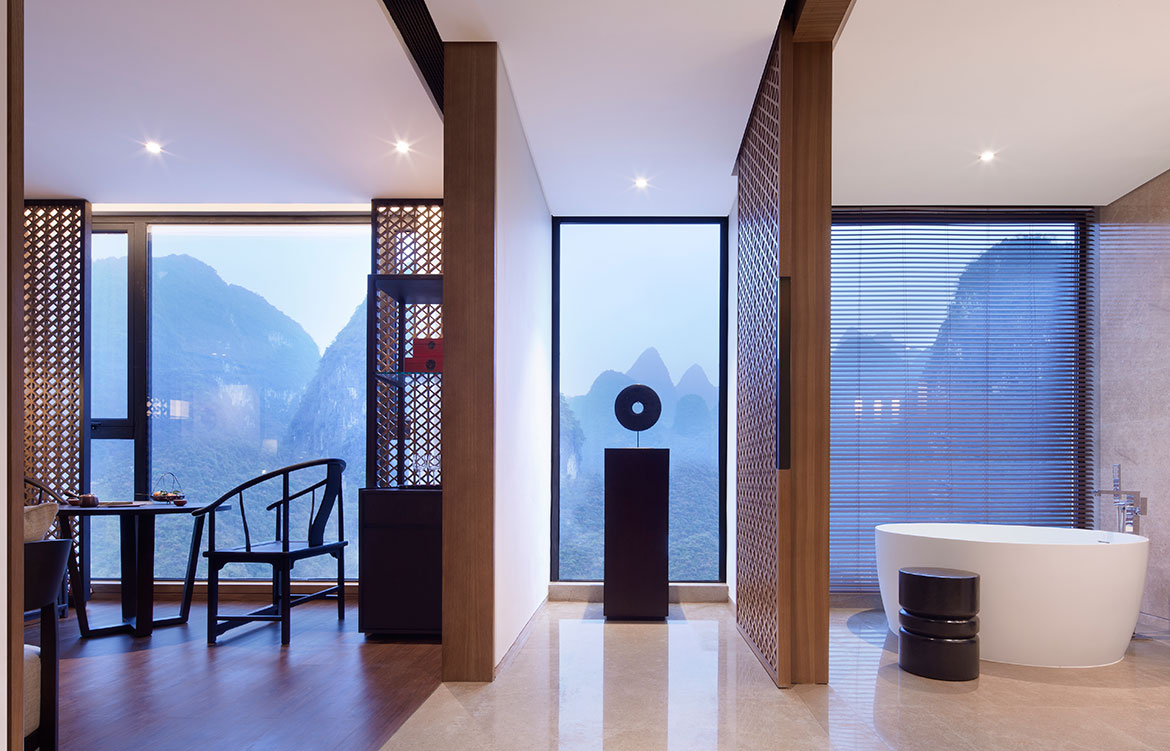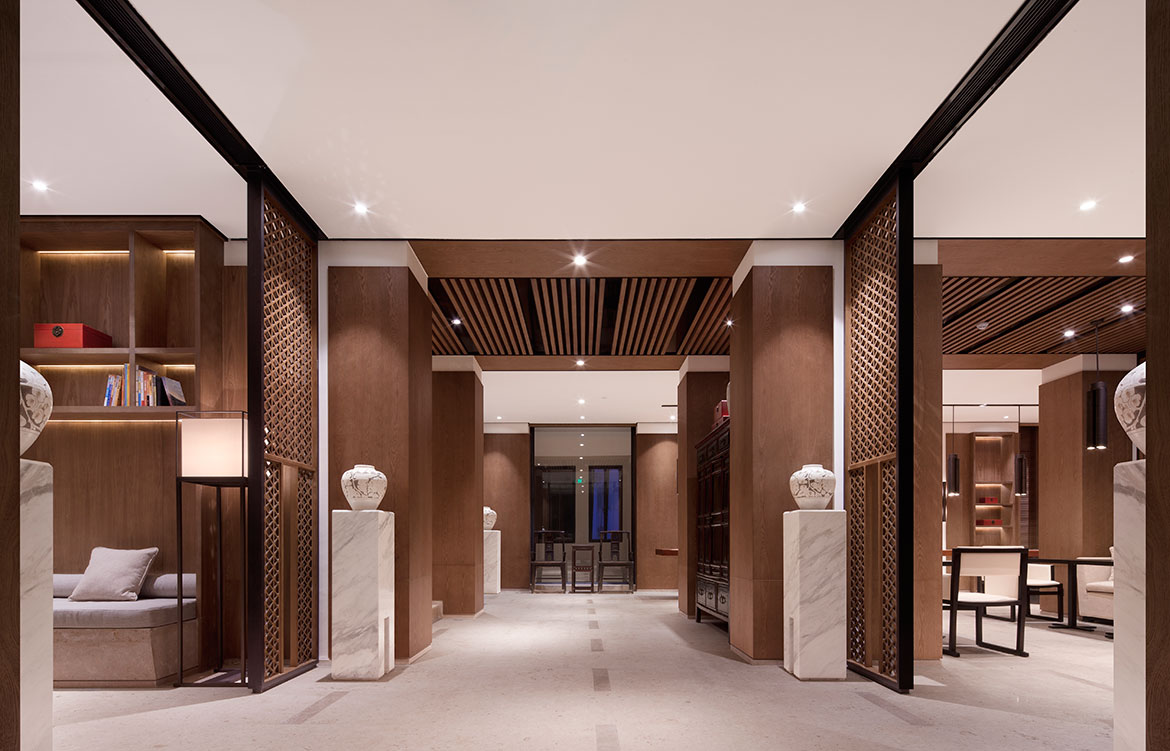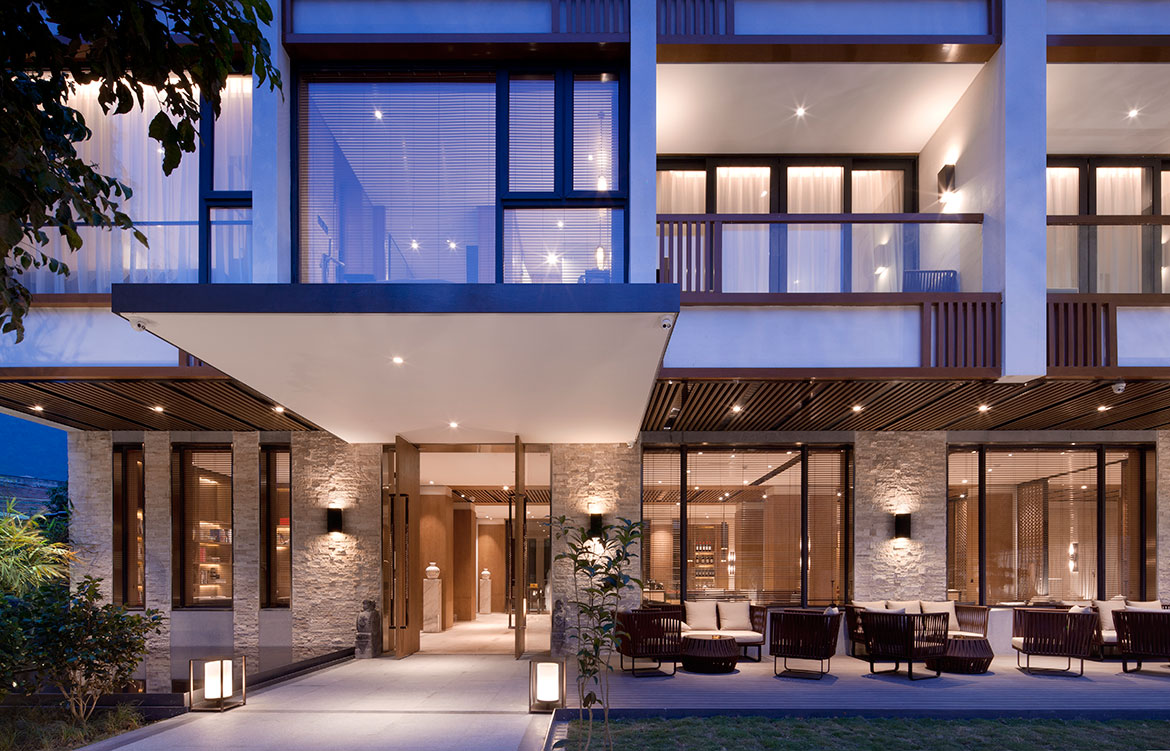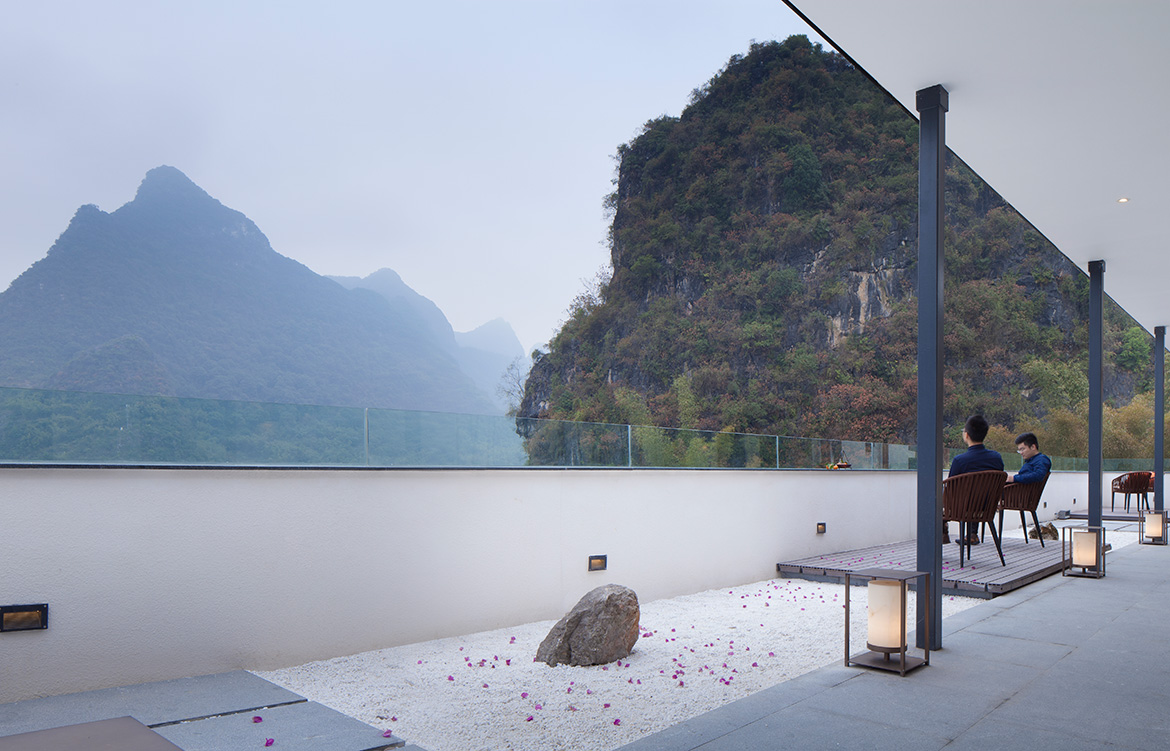The Blossom Dreams hotel is positioned against the absolutely serene mountains of Xiatang, in Yangshuo, China. Deciding on the location for the hotel’s first incarnation was easy, yet the design had to be scrupulously considered, to augment and not compete with the exterior setting. Chinese firm, Co-Direction Interior Design, took reigns over the architecture, landscape and interior design to ensure a holistic artistic vision guided all aspects of the project.
Co-Direction Interior Design selected a humble and muted colour palette to frame and focus the chilled and misty blues of the surrounding mountains. Earthy browns and cream flow across both the exterior and interior, allowing for the majesty of the environment to dominate the view.
The textured stone façade references the rough-cut indentation of the surrounding earth. While timber accents in the roof grille, windows and doors harness the natural quality of the wooden grain to extend a sense of nature, merging the hotel visually back into the exterior world.

The hotel’s gardens borrow from the canon of the classic Chinese garden, carving out a private courtyard within a three-meter high bamboo forest. Water is used in the landscaping to reflect the silhouettes of the flowers, trees and – of course – the mountains. The liquid materiality of the water creates a rippling texture that interacts with the scenery, and further helps to evoke the calm of the location within the parameters of the hotel.
White space, or negative space, is the essence of traditional Chinese art, figuratively stirring together emptiness and reality. This artistic appreciation of space also informs the interior of the Blossom Dreams Hotel. White melded marble creates a visually expansive interior space that is simultaneously restful and intricate. This rich, yet sparse, palette of timber and cream allows for the seamless integration of contemporary and historic elements. Heavy antique chests and museum-quality vases puncture communal living and dining spaces while intricately hand-carved partitions create inviting nooks to hide.
The Blossom Dreams Hotel is designed to be the very embodiment of escape. The location is idyllic and immense. The warm glow of the interior reveals a gentle and protective space to appreciate being amongst – and in harmony with – the outside world.
Photography by Jing Xufeng

